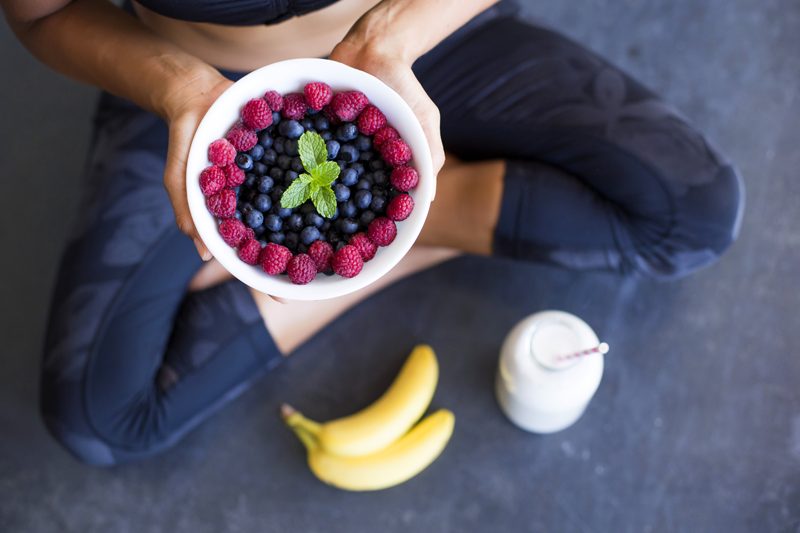
How to Choose a Yoga Retreat
5th July 2019
The Top 5 Mindfulness Destinations Around the World
12th July 2019What is a Yoga Diet?

When it comes to what to eat, being environmentally conscious with our food choices is definitely “in” right now. With a range of organic, farm-raised, and gluten-free products hitting the shelves, we are suddenly able to choose our food wisely. As well as hitting the yoga mat regularly, many yogis like to eat a yoga diet. When it comes to a yoga diet, many people mistake it for being the same a vegan diet. However, this isn’t necessarily the case. So, what is a yoga diet? In short, a yoga diet follows some pretty simple rules. According to yoga guru Swami Sivananda, a yogic or yoga diet should include the following things.
Sattvic
In yogic philosophy, there are three qualities of all things in nature. The first quality is Raja, which can be translated to hot, spicy, and fast. The second is Tama, meaning slow, bland, and lethargic. The final quality is Sattva, which translates to purity and harmony. While all three qualities are present in everything, one quality is dominant.
Typically, Rajasic foods are bitter, hot, dry, spicy, or salty. They excite the passions but overstimulate the mind. On the opposite end of the scale, Tamasic foods are bland and include alcohol, meat, tobacco, garlic, onions, and fermented or overripe foods. Sattvic foods are pure. This makes them the most suitable for any serious yogi. In addition to nourishing the body, Sattvic foods maintain a peaceful state of mind and allow it to function at its best. Ultimately, a Sattvic diet will lead to a healthy body and a peaceful mind, with a harmonious flow of energy between the two.
Some examples of Sattvic foods include wholemeal bread, pure fruit juices, fresh fruit and vegetables, milk, butter and cheese, nuts, legumes, seeds, sprouted seeds, honey and herbal teas. When eating a Sattvic diet, some yogis refrain from eating dairy. This may be because they disagree with the way it’s obtained or they’re wary of the unknown additives and hormones. If you want to remove dairy from your diet, it can be replaced with a milk alternative like almond or coconut milk.
Vegetarian
Typically, a yoga diet is vegetarian. Many yogis live by a quote by Yogi Bhajan “The lion is a great meat-eater, and he is called the king of the jungle. But no animal can match the elephant, a complete vegetarian, for pure strength.”
Fear of protein deficiency causes many meat-eaters to object to a vegetarian diet. However, protein that is obtained from meat is arguably the worst kind – protein that is dead or dying. Animal protein contains a high level of uric acid and other toxins that need to be broken down by the liver. While some of these are eliminated from the body, the rest is deposited in the tissues and joints and can lead to problems such as cancer and arthritis. Uric acid also makes it harder to reach a clear meditative state because it’s an irritant to the bloodstream. Meat is also one of the greatest sources of cholesterol, meaning that it can contribute to heart disease and hardening of the arteries. For optimum health, women need to digest their food within 18 hours, and men within 24 hours. Typically, meat takes at least three days to pass through the body. Nuts, leafy greens, legumes, and dairy products are packed with high-quality protein. Unlike meat, their main residue is cellulose. As this is inert, it does not pollute the body and is easily digestible.

Free from Chemicals and Stimulants
A yoga diet should be free from chemicals and stimulants. To do this, choose organic products and avoid tobacco, caffeine, alcohol, and artificial sweeteners. In addition to being unhealthy for the body, these substances alter the mind and make concentration difficult.
Contain Fresh Foods
Whenever possible, prepare a fresh meal instead of using frozen or ready-made products. Frozen, packaged, prepared, and left-over foods should be avoided.
Regular
For best results, train your body to eat at regular times. Doing this will allow the body to better utilise its energy throughout the day as it knows when the next meal is coming. The body has natural cycles, and functions optimally when these cycles are steady and regular. When possible, avoid food two hours before sleep or exercise. If you eat shortly before exercise, you’ll waste a certain amount of energy digesting your food. Allowing enough time for digestion before sleep will help to keep energy free to repair tissue damage and fight infection.
Include Fasts
When eating a yoga diet, it’s recommended that you choose one day each week to fast. A fast can either be strict and not allow anything to enter the body, or it can include water and fruit juices. Whichever method you choose, keep in mind that the goal of your fast is to purify your body and mind. If one day per week seems unrealistic, try something a little more attainable. Some yogis choose to fast on Ekadashi, the 11th day of each lunar month.
Practice Ahimsa
Finally, a yoga diet should include the practice of ahimsa. The first of the yoga observances, ahimsa or nonviolence can be applied to the food we eat. To do this, yogis should make environmentally conscious food choices that do not harm the planet, animals, or other people. Many people drink bottled water to stay hydrated, particularly when exercising. However, drinking from one-use plastic bottles causes a high level of pollution. To apply ahimsa, invest in a refillable glass bottle instead.
In Summary
To eat a yoga diet, follow the simple steps above. Ultimately, eating a yoga diet and putting on your yoga bra regularly will keep your body happy and healthy. While the changes above may seem small and insignificant, making them can have a big impact on your everyday life.

